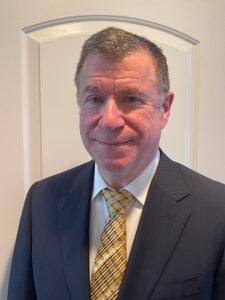If your Labor Day Weekend and Autumn exploration includes traveling by car, sitting in the driver’s seat for any length of time distorts the natural curves of the spine, which can cause muscles in your back and neck to become strained. And because the flow of oxygen-rich blood is reduced, muscles in your back or neck can knot, spasm and really hurt. Whether you’ve never had a back or neck issue before, or it’s a recurring problem, following a few simple tips can minimize the risk of ruining your trip and, possibly, your life going forward.
Prevent Back Pain
First, Adjust Your Car to Fit You Right
Seat:
- Adjust the lumbar support for even and comfortable back support; or add a lumbar support pillow, or a rolled up towel.
- Recline the seat at a 100-110 degree angle, which is slightly backward, to reduce pressure on lower back discs
- Adjust the seat belt (not the seat) to fit you comfortably; get a soft shoulder cover if you need it
Steering wheel:
- Angle it down and close to you to minimize reach and the strain on your upper back
Pay Attention to Your Body
- Don’t put anything you may need in the back seat to avoid having to twist and stretch awkwardly
- Occasionally change your hand positions and grip on the wheel
- Take breaks at least every 2 hours: Get out and stretch your legs and lower and upper back to keep your muscles loose and less likely to spasm
- Drink lots of water to keep tissues hydrated…and to force you to take breaks at rest stops
- Keep an ice pack in your cooler and apply it for 15 minute stretches to slow inflammation and numb sore tissues
- Use disposable heat wraps, a plug-in heating pad, or your heated seats for up to 30 minutes at a time to relax stiff muscles
Recover On Arrival
- Stretch and loosen up before you lift anything heavy out of the trunk and carry it
- If you’re hurting a lot, take a hot shower, use a hot tub or Jacuzzi, go for a swim or get a massage to counter-balance the effects of your road trip
During driving breaks, do simple stretching exercises andself-tractioning techniques, like laying over a tailgate or hood of a car to depressurize lumbar discs.
Prevent Neck Pain
Adjust Your Seat
- Set your seat height with enough headroom so you don’t have to bend your head down or to the side
- Move your seat as far forward as possible to minimize neck and upper back fatigue from reaching for the steering wheel, which should be angled downward
- Adjust your head rest to relax your neck muscles, centering it in the middle of your head
Adjust All Mirrors
- Make sure you don’t have to strain your neck to see all around; cover any blind sports by adding a small dashboard mirror
Just Drive
- Bending over and eating or taking notes can cause movements that result in neck and spine pain (Drive with good posture!)
- Don’t put anything you may need in the back seat to avoid twisting and stretching awkwardly and dangerously
Take Frequent Breaks
- Stop a minimum of every 2 hours: Get out and stretch your neck and upper and lower back (as well as your legs) to keep your muscles loose and less likely to spasm
- Drink lots of water to keep tissues hydrated…and to force you to take breaks
- Keep an ice pack in your cooler and apply it for 15 minute stretches to slow inflammation and numb sore tissues
- Use disposable heat wraps or a plug-in heating pad for up to 30 minutes at a time to relax stiff neck muscles
Recover On Arrival, as above
Have a safe and enjoyable drive and pay attention to your comfort and movements. If you experience back pain or neck pain that doesn’t go away after a while, call us at New Jersey Pain Care Specialists to find out how we can help you.
